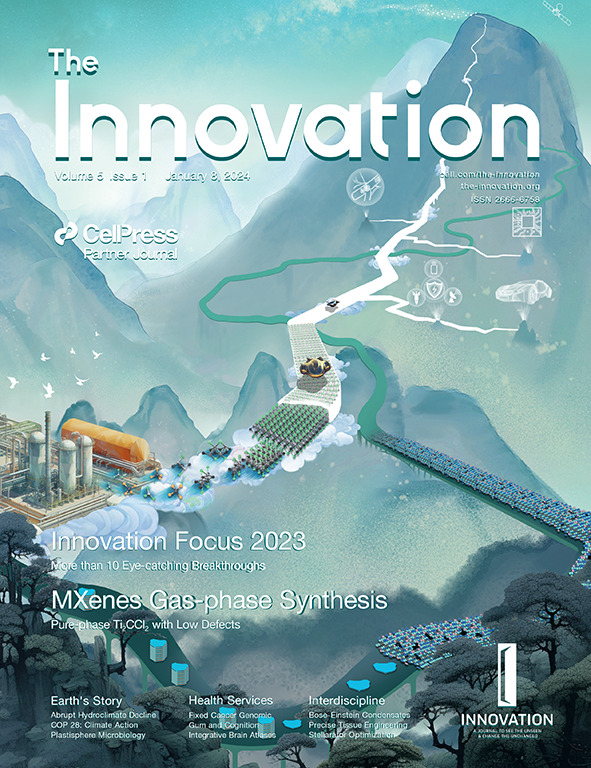Tobacco as a promising crop for low-carbon biorefinery
IF 33.2
1区 综合性期刊
Q1 MULTIDISCIPLINARY SCIENCES
引用次数: 0
Abstract
Energy crops play a vital role in meeting future energy and chemical demands while addressing climate change. However, the idealization of low-carbon workflows and careful consideration of cost-benefit equations are crucial for their more sustainable implementation. Here, we propose tobacco as a promising energy crop because of its exceptional water solubility, mainly attributed to a high proportion of water-soluble carbohydrates and nitrogen, less lignocellulose, and the presence of acids. We then designed a strategy that maximizes biomass conversion into bio-based products while minimizing energy and material inputs. By autoclaving tobacco leaves in water, we obtained a nutrient-rich medium capable of supporting the growth of microorganisms and the production of bioproducts without the need for extensive pretreatment, hydrolysis, or additional supplements. Additionally, cultivating tobacco on barren lands can generate sufficient biomass to produce approximately 573 billion gallons of ethanol per year. This approach also leads to a reduction of greenhouse gas emissions by approximately 76% compared to traditional corn stover during biorefinery processes. Therefore, our study presents a novel and direct strategy that could significantly contribute to the goal of reducing carbon emissions and global sustainable development compared to traditional methods.烟草是低碳生物精炼的理想作物
在应对气候变化的同时,能源作物在满足未来能源和化学品需求方面发挥着至关重要的作用。然而,低碳工作流程的理想化和对成本效益等式的仔细考虑对其更可持续的实施至关重要。在此,我们建议将烟草作为一种前景广阔的能源作物,因为烟草具有优异的水溶性,这主要归因于烟草中水溶性碳水化合物和氮的比例较高,木质纤维素较少,并且含有酸性物质。我们随后设计了一种策略,在最大限度地将生物质转化为生物基产品的同时,最大限度地减少能源和材料的投入。通过在水中对烟叶进行高压灭菌,我们获得了一种营养丰富的培养基,能够支持微生物的生长和生物产品的生产,而无需进行大量的预处理、水解或额外补充。此外,在贫瘠的土地上种植烟草每年产生的生物量足以生产约 5,730 亿加仑乙醇。与传统的玉米秸秆相比,这种方法还能在生物精炼过程中减少约 76% 的温室气体排放。因此,与传统方法相比,我们的研究提出了一种新颖而直接的策略,可大大有助于实现减少碳排放和全球可持续发展的目标。
本文章由计算机程序翻译,如有差异,请以英文原文为准。
求助全文
约1分钟内获得全文
求助全文
来源期刊

The Innovation
MULTIDISCIPLINARY SCIENCES-
CiteScore
38.30
自引率
1.20%
发文量
134
审稿时长
6 weeks
期刊介绍:
The Innovation is an interdisciplinary journal that aims to promote scientific application. It publishes cutting-edge research and high-quality reviews in various scientific disciplines, including physics, chemistry, materials, nanotechnology, biology, translational medicine, geoscience, and engineering. The journal adheres to the peer review and publishing standards of Cell Press journals.
The Innovation is committed to serving scientists and the public. It aims to publish significant advances promptly and provides a transparent exchange platform. The journal also strives to efficiently promote the translation from scientific discovery to technological achievements and rapidly disseminate scientific findings worldwide.
Indexed in the following databases, The Innovation has visibility in Scopus, Directory of Open Access Journals (DOAJ), Web of Science, Emerging Sources Citation Index (ESCI), PubMed Central, Compendex (previously Ei index), INSPEC, and CABI A&I.
 求助内容:
求助内容: 应助结果提醒方式:
应助结果提醒方式:


